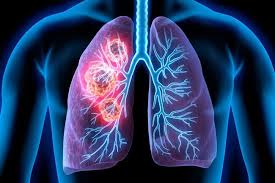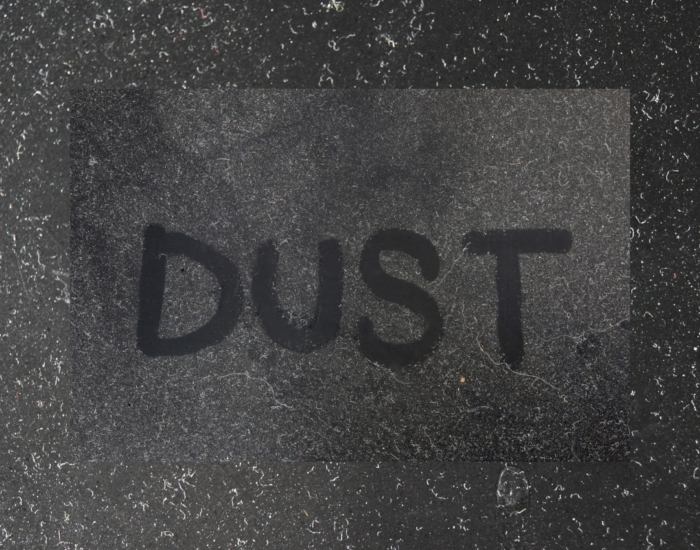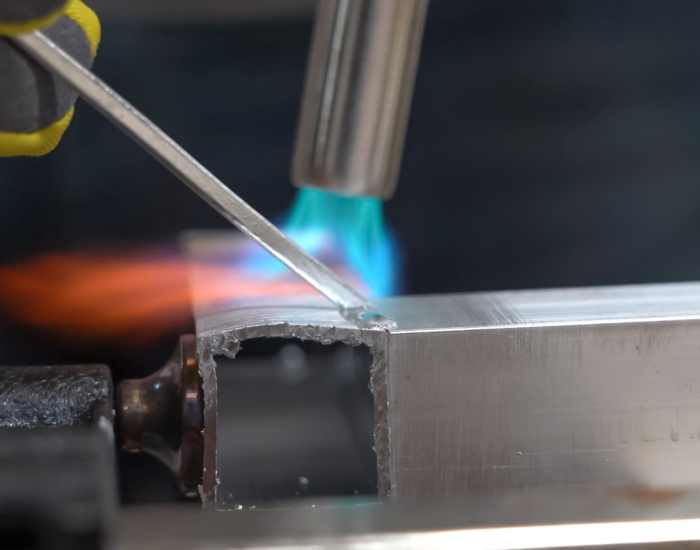Author: admin
welding fume extraction system at a manufacturing plant
We are thrilled to highlight the successful installation of our welding fume extraction system at a manufacturing plant
In manufacturing plants, employees working with welding processes face significant health risks due to exposure to welding fumes released during the operation. These fumes, made up of a complex mixture of metallic oxides, silicates, and toxic particles, are produced when metals are heated and melted. Workers can inhale these harmful fumes during the welding process, leading to immediate and long-term health problems.

Prolonged exposure to welding fumes can result in various respiratory issues such as coughing, throat irritation, shortness of breath, and more severe conditions like metal fume fever, chronic bronchitis, asthma, and even lung cancer. The dangerous compounds present in welding fumes, such as manganese, chromium, and nickel, not only affect the respiratory system but can also cause neurological disorders, impacting the nervous system over time. Employees may experience symptoms like headaches, dizziness, and fatigue due to exposure to these toxic substances.
The uniqueness of our product selection:
1. After the installation of the Apzem welding fume extractor, employees have reported a significant improvement in their working conditions.
2. The Apzem Welding Fume Extractor efficiently eliminates harmful toxic fumes produced during the welding process, creating a safer and healthier environment for everyone. As a result, workers no longer face the constant exposure to dangerous fumes that can lead to respiratory problems and other health issues.
3. With the removal of these pollutants from the air, employees can focus on their tasks without worrying about the negative effects on their well-being.
4. This improved air quality fosters a sense of security, leading to increased productivity and overall satisfaction.
5. The company’s commitment to employee health through the installation of this advanced fume extraction system not only enhances safety but also contributes to the long-term health and wellness of its workforce.
The Hidden Danger: How Air Pollution Messes with Your Lung Blood Vessels
In busy cities and industrial areas, the air we breathe isn’t always as clean as it should be. Beyond the usual worries about air pollution, there’s a less-talked-about problem: it messes with the tiny blood vessels in our lungs. New research shows that this can lead to serious health issues. This blog explores the connection between air pollution and lung blood vessels, underlining why we need to pay attention to this issue for our health and the environment.
Understanding Lung Blood Vessels: Before we get into the effects of air pollution, let’s understand what the blood vessels in our lungs do. Like a complicated network of roads, these vessels carry blood between our heart and lungs. They ensure oxygen and carbon dioxide exchange properly, which is super important for keeping our bodies running smoothly. Anything that messes with this system can seriously impact our health.
How Air Pollution Messes Things Up: Studies are showing that being around air pollution can mess with how the blood vessels in our lungs work. Tiny particles like PM2.5, gases like NO2, and ozone – all found in polluted air – can get deep into our lungs and cause inflammation and stress.
Inflammation: When we breathe in pollutants, our body reacts by getting all inflamed. If this keeps happening over time, it can make the blood vessels in our lungs narrow. This makes it harder for blood to flow and messes up the way our lungs exchange gases.
Oxidative Stress: Air pollution also causes oxidative stress, where our bodies struggle to deal with harmful substances. This stress can damage the cells lining our lung blood vessels. When this happens, blood vessels don’t open up properly, messing with blood flow.
Health Consequences: This damage to lung blood vessels isn’t just a minor issue. It can make conditions like asthma and COPD worse, or even cause them. Plus, it’s been linked to an increased risk of heart problems like high blood pressure and heart attacks.
Tackling the Invisible Menace: Dust Control Solutions for Ultrafine and Fine Dust
In the dynamic landscape of industrial operations, the omnipresent challenge of dust, particularly ultrafine and fine particles demands innovative solutions. These minute particles, often invisible to the naked eye, pose significant risks to both human health and the efficiency of machinery. This blog explores the intricacies of ultrafine and fine dust and sheds light on how industrial dust collectors play a pivotal role in effectively removing these particles, ensuring a safer and more productive working environment.
Understanding Ultrafine and Fine Dust:
Ultrafine particles, measuring less than 2.5 micrometers (PM2.5), and fine particles with diameters up to 10 micrometers (PM10), are notorious for their ability to linger in the air and penetrate deep into the respiratory system. These particles, often byproducts of industrial processes, not only pose health risks to workers but can also lead to machinery wear, corrosion, and reduced operational efficiency.
Benefits of Industrial Dust Collectors:
- Improved Air Quality:
- Industrial dust collectors significantly reduce airborne dust, improving the overall air quality within the facility.
- Enhanced air quality translates to a healthier work environment, reducing the risk of respiratory issues among employees.
- Equipment Longevity:
- By preventing the accumulation of dust on machinery and surfaces, dust collectors contribute to the longevity and efficiency of industrial equipment.
- Regular maintenance of dust collectors ensures optimal performance and extends the life of machinery.
- Compliance with Regulations:
- We are employing effective dust control solutions, including industrial dust collectors, aids in compliance with environmental and occupational health regulations.
- Meeting regulatory standards ensures a safer workplace and protects businesses from potential fines and legal issues.
Resolving Unpleasant Odors through Dust Collection and Odor Control
In the dynamic landscape of industrial processes, managing air quality is a paramount concern. As industries strive for efficiency and sustainability, addressing issues like dust and odors becomes crucial not only for compliance but also for creating a healthier work environment. This blog explores the concept of integrated dust collection and odor control, shedding light on the types of odors prevalent in industries and how manufacturers of dust collectors and scrubbers are pioneering solutions to combat these challenges.
Understanding Industrial Odors:
Industrial processes generate a myriad of odors, each posing unique challenges to environmental and occupational health. Some common types of odors in industries include:
- Chemical Odors: As a result of the use of various chemicals in manufacturing processes, these odors can be harsh and potentially harmful.
- Biological Odors: Arising from organic materials, such as those in food processing or wastewater treatment, biological odors can be unpleasant and pose health risks.
- Combustion Odors: Associated with processes involving burning or combustion, these odors can range from smoky to acrid.
- Volatile Organic Compounds (VOCs): Commonly emitted during industrial activities, VOCs contribute to air pollution and can have adverse health effects.
- Particulate Matter Odors: Arising from the release of fine particles during manufacturing, these odors can be irritating and harmful if inhaled.
The Role of Dust Collectors and Scrubbers:
Dust collectors and scrubbers play a pivotal role in addressing both dust and odor challenges in industrial settings. Here’s how:
Dust Collection & Odor Control
- Efficient Filtration: Advanced dust collectors employ high-efficiency filtration systems to capture and remove particulate matter from the air, preventing it from dispersing into the environment.
- Scrubbers: These systems utilize chemical reactions to neutralize and eliminate odorous compounds from the air. By choosing the appropriate scrubbing media, manufacturers can target specific odors emitted in various industrial processes.
Benefits to Industries:
- Compliance: By investing in integrated dust collection and odor control systems, industries can ensure compliance with stringent environmental regulations, avoiding potential fines and penalties.
- Employee Health and Safety: Creating a cleaner and odor-free work environment contributes to the well-being of employees, reducing the risk of respiratory issues and other health concerns associated with exposure to pollutants.
Operational Efficiency: Efficient air quality control systems contribute to the overall efficiency of industrial processes by minimizing downtime, maintenance costs, and disruptions caused by environmental concerns.
Beyond the Sparks: Unveiling the Hidden Dangers of Aluminum Welding
Aluminum welding presents several health and safety risks that welders, employers, and safety professionals should be aware of:
Aluminum Fume Inhalation: During aluminum welding, fumes containing aluminum oxide particles are released. Inhalation of these fumes can lead to respiratory problems, including conditions like aluminum fume fever, which can cause flu-like symptoms such as fever, cough, and headache.
Neurological Effects: Prolonged exposure to aluminum fumes can result in aluminum-induced encephalopathy, a condition that affects the nervous system. Symptoms may include memory loss, muscle weakness, and speech impairments.
Pulmonary Issues: Aluminum welding fumes can also lead to lung problems, including fibrosis and impaired lung function. Chronic exposure to aluminum particles can increase the risk of lung cancer.
Eye and Skin Irritation: Welding with aluminum can release intense UV radiation and visible light that may cause eye damage and skin burns. Prolonged exposure can lead to more severe conditions.
Fire and Explosion Risks: Aluminum dust and particles are highly flammable and can potentially lead to fires or explosions in the workplace if not managed properly.
Mitigating the Risks with Apzem’s Welding Fume Extractor:
To protect both welders and the workplace, it’s essential to implement effective control measures. Apzem’s welding fume extractor is a reliable solution for mitigating the dangers of aluminum welding:
Efficient Fume Capture: Apzem’s extractor uses high-quality filters and a powerful fan to capture welding fumes directly at the source. This prevents the release of harmful fumes into the working environment.
Advanced Filtration: Apzem’s welding fume extractors come equipped with multi-stage filtration systems that remove particulate matter, gases, and fumes. This ensures a cleaner and healthier working environment.




